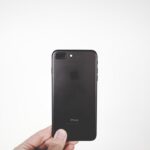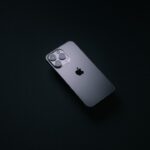In the digital age, smartphones have become an integral part of our lives, serving not only as communication devices but also as repositories for our most cherished memories. Among these memories, photographs hold a special place, capturing moments that we often wish to revisit. However, the unfortunate reality is that iPhones, like any electronic device, are susceptible to various issues that can lead to data loss.
Whether it’s due to accidental deletion, software malfunctions, or physical damage, losing photos can be a distressing experience. Understanding the underlying causes of these issues is crucial for effective recovery. Accidental deletion is one of the most common reasons for photo loss on iPhones.
Users may inadvertently delete images while trying to free up space or during routine maintenance. Additionally, software updates can sometimes lead to unexpected glitches that result in data loss. Physical damage, such as a cracked screen or water exposure, can also render an iPhone inoperable, making it impossible to access stored photos.
Recognizing these potential pitfalls is the first step in mitigating the impact of data loss and exploring recovery options.
Key Takeaways
- Understanding the Issue: Recognize the signs of a broken iPhone and the potential data loss that may occur.
- Assessing the Damage: Evaluate the extent of the damage to determine the best course of action for data recovery.
- Backing Up Your iPhone: Regularly back up your iPhone to prevent permanent data loss in case of damage or malfunction.
- Using a Third-Party Software: Consider using reputable third-party software to recover photos and other data from a broken iPhone.
- Seeking Professional Help: If all else fails, seek professional help from a data recovery service or a broken iPhone data extraction tool.
Assessing the Damage
Assessing iPhone Functionality
To evaluate the condition of your iPhone is operational, start by checking its functionality. Can you power it on? Is the touchscreen responsive? If the device is operational but certain features are malfunctioning, such as the camera or photo gallery, you may be able to troubleshoot these issues before considering data recovery options.
Recovery Options for Operational Devices
If your device is still operational but certain photos are missing, you may be able to recover them through built-in features or software solutions.
Recovery Options for Non-Functional Devices
On the other hand, if your iPhone is completely non-functional, you will need to explore more advanced recovery methods that may involve professional assistance or specialized software.
Backing Up Your iPhone

One of the most effective ways to safeguard your photos and other important data is by regularly backing up your iPhone. Apple provides several options for backing up data, including iCloud and iTunes. By creating backups, you can ensure that even if your device experiences issues, your photos remain safe and retrievable.
Setting up automatic backups through iCloud is particularly convenient, as it allows for seamless data protection without requiring manual intervention. To back up your iPhone using iCloud, navigate to Settings, tap on your name at the top, and select iCloud. From there, you can enable iCloud Backup and choose to back up your data automatically when your device is connected to Wi-Fi and charging.
Alternatively, for those who prefer a more hands-on approach, backing up via iTunes provides a comprehensive solution that stores all data locally on your computer. This method allows for greater control over what gets backed up and can be particularly useful for users with limited iCloud storage.
Using a Third-Party Software
| Software | Features | Cost | Integration |
|---|---|---|---|
| Microsoft Office 365 | Word processing, spreadsheet, email | 12.50 per user per month | Easy integration with Microsoft products |
| Adobe Creative Cloud | Photo editing, graphic design, video editing | 52.99 per month | Seamless integration with Adobe products |
| Slack | Team communication, file sharing | 6.67 per user per month | Integration with various project management tools |
In situations where traditional recovery methods fall short, third-party software can offer a viable solution for retrieving lost photos from an iPhone. Numerous applications are available that specialize in data recovery, each with its own set of features and capabilities. These tools often provide user-friendly interfaces and step-by-step instructions, making them accessible even for those with limited technical expertise.
When selecting third-party software for photo recovery, it’s essential to choose a reputable program with positive user reviews and a proven track record. Some popular options include Dr.Fone, EaseUS MobiSaver, and Tenorshare UltData. These applications typically allow users to scan their devices for recoverable files and preview them before initiating the recovery process.
This feature can be particularly beneficial as it enables users to identify specific photos they wish to restore without having to recover all lost data.
Seeking Professional Help
If your attempts at recovery have been unsuccessful or if your iPhone has suffered severe physical damage, seeking professional help may be necessary. Data recovery specialists possess the expertise and tools required to recover lost files from damaged devices. These professionals can often retrieve data that standard recovery methods cannot access due to hardware failures or complex software issues.
When considering professional data recovery services, it’s important to research reputable companies with experience in handling iPhone repairs and data retrieval. Many of these services offer free consultations to assess the damage and provide an estimate for recovery costs. While professional services can be more expensive than DIY methods, they often yield higher success rates and can save users from permanent data loss.
Retrieving Photos from iCloud

For users who have enabled iCloud Photo Library or regularly back up their devices to iCloud, retrieving lost photos can be a straightforward process. Apple’s cloud service automatically stores images uploaded from your device, allowing you to access them from any device signed into your Apple ID. If you’ve accidentally deleted photos from your iPhone but have been using iCloud Photo Library, there’s a good chance you can recover them directly from the cloud.
To retrieve photos from iCloud, start by logging into your iCloud account on a web browser or through the Photos app on another Apple device. Navigate to the “Photos” section and check if the missing images are available there. If you find them in the “Recently Deleted” album within the Photos app, you can restore them easily within 30 days of deletion.
If they are not present in either location, you may need to explore other recovery options or check if you have an older backup that contains the missing images.
Using a Data Recovery Service
In cases where DIY methods fail or when dealing with severely damaged devices, utilizing a professional data recovery service can be a lifesaver. These services specialize in recovering lost data from various types of devices and employ advanced techniques that go beyond standard software solutions. They often have access to specialized tools and cleanroom environments necessary for safely handling hardware repairs.
When selecting a data recovery service, consider factors such as their success rate, customer reviews, and turnaround time. Many reputable companies offer no-data-no-fee policies, meaning you only pay if they successfully recover your files. This can provide peace of mind when entrusting your device to professionals who will handle it with care while attempting to retrieve your precious memories.
Extracting Photos from iTunes Backup
If you regularly back up your iPhone using iTunes, you may have a treasure trove of photos stored in those backups waiting to be extracted. The process of retrieving photos from an iTunes backup involves restoring the entire backup onto your device or using specialized software designed to extract specific files without overwriting current data on your phone. To extract photos from an iTunes backup using software like iPhone Backup Extractor or Dr.Fone, first ensure that you have installed the application on your computer.
Connect your device and select the relevant backup file from which you wish to retrieve photos. The software will scan the backup and present you with a list of recoverable files, allowing you to selectively restore only the images you need without affecting other data on your device.
Utilizing a Broken iPhone Data Extraction Tool
For users dealing with broken or unresponsive iPhones, specialized data extraction tools can provide a lifeline for recovering lost photos. These tools are designed specifically for situations where traditional methods fail due to hardware issues or software corruption. They often come equipped with features that allow users to bypass certain restrictions imposed by damaged devices.
When using a broken iPhone data extraction tool, it’s crucial to follow the instructions carefully to avoid further complications. Many of these tools require users to put their devices into specific modes (such as DFU mode) before initiating the extraction process. Once in the correct mode, the software will attempt to access the device’s memory directly and retrieve any recoverable files, including photos stored on the device.
Recovering Photos from the Broken iPhone’s Memory
In extreme cases where an iPhone is physically damaged beyond repair but still has intact memory components, recovering photos directly from the memory chip may be possible through advanced techniques employed by specialized data recovery labs. This process involves disassembling the device and accessing its internal components—a task best left to professionals due to its complexity and risk of further damage. Data recovery experts utilize sophisticated equipment and techniques such as chip-off recovery or micro soldering to extract data directly from memory chips.
This method is typically reserved for severe cases where other recovery options have failed and should only be undertaken by experienced technicians who understand the intricacies of smartphone hardware.
Preventing Future Data Loss
Preventing future data loss requires proactive measures that ensure your photos and other important files remain safe regardless of unforeseen circumstances. Regularly backing up your device is one of the most effective strategies; consider implementing both cloud-based solutions like iCloud and local backups via iTunes or Finder on macOS Catalina and later versions. Additionally, being mindful of how you handle your device can significantly reduce risks associated with physical damage.
Investing in protective cases and screen protectors can help shield your phone from drops and spills that could lead to hardware failures. Furthermore, staying informed about software updates and promptly addressing any glitches or issues can help maintain optimal performance and reduce the likelihood of unexpected data loss scenarios. By adopting these preventive measures and understanding various recovery options available for lost photos on an iPhone, users can navigate potential challenges with greater confidence and resilience in an increasingly digital world where memories are often stored in pixels rather than prints.
FAQs
What are the common reasons for a broken iPhone?
Common reasons for a broken iPhone include dropping the device, water damage, and hardware malfunctions.
Can I retrieve photos from a broken iPhone?
Yes, it is possible to retrieve photos from a broken iPhone using various methods such as using iTunes or iCloud backup, third-party software, or seeking professional help from a phone repair service.
How can I retrieve photos from a broken iPhone using iTunes or iCloud backup?
You can retrieve photos from a broken iPhone using iTunes by connecting the device to a computer and restoring from a backup. With iCloud, you can access your photos by logging into your iCloud account on a different device.
What third-party software can I use to retrieve photos from a broken iPhone?
There are various third-party software options available such as Dr.Fone, iMyFone D-Back, and PhoneRescue that can help retrieve photos from a broken iPhone.
Should I seek professional help to retrieve photos from a broken iPhone?
If you are unable to retrieve photos using DIY methods, seeking professional help from a phone repair service or data recovery specialist may be necessary to retrieve photos from a broken iPhone.











1 thought on “Retrieve Photos from Broken iPhone: A Guide”